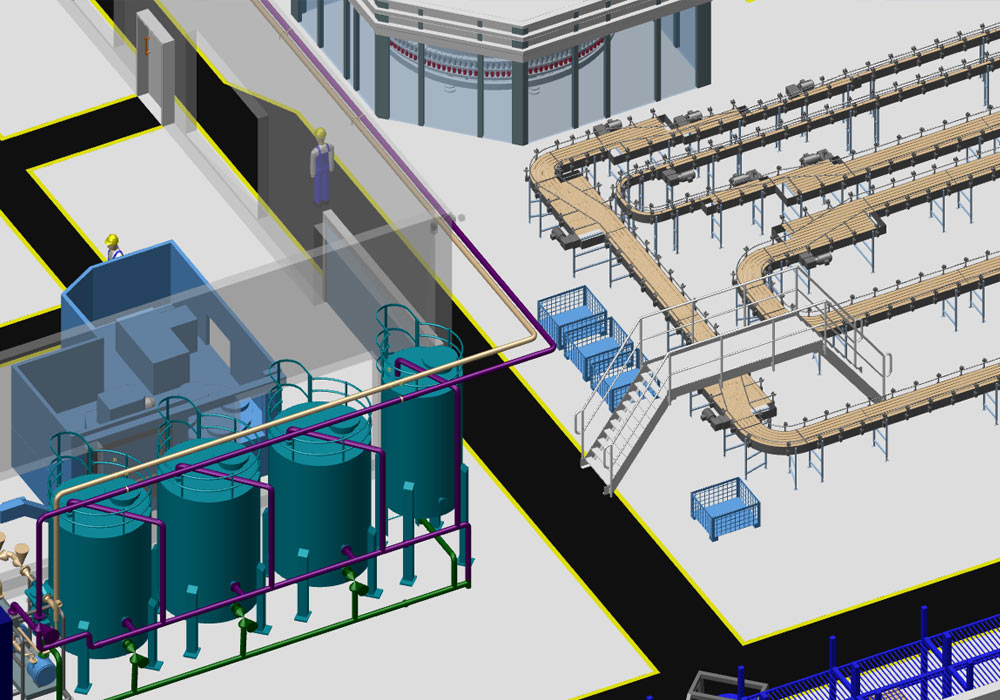Conveyor systems: Complete overview and tips to overcome the technical challenges
Conveyor systems are a key component of modern production processes and enable efficient and cost-effective materials handling.
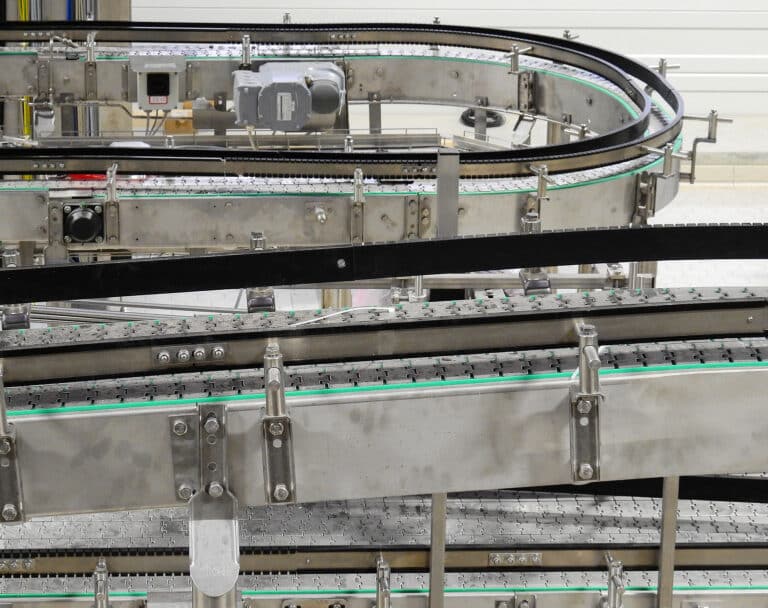
What exactly is a conveyor system?
Conveyor systems are used for materials handling, which is a sub-discipline of mechanical engineering. They can be found in almost all companies that rely on conveyor systems for production or logistics. This includes systems for transporting bulk goods as well as larger general cargo, work items and even people over limited distances. Depending on the requirements, sometimes very different systems are used, which can involve extremely complex structures.
It is always necessary to set up good conveyor logistics in a company when it comes to an uninterrupted material flow. Time savings play a decisive role here because time is money, especially in production and logistics.
Process chains can only function unhindered if the production, processing and redistribution of goods are precisely controlled. Designing conveyor systems is always a challenge because almost every industry has its own requirements.
For example, conveyor systems for food or medicines must meet different requirements to those used for transporting small parts for ballpoint pens or large industrial machines. The processing and transportation of frozen goods is a particular challenge because compliance with regulations for temperature-sensitive products is mandatory.
How do conveyor systems differ from pure warehouse logistics?
Especially in the areas of Industry 4.0 and online trading, warehouse logistics have been completely revolutionised in recent years by just-in-time delivery and large centralised warehouses. The storage and management of goods is at the forefront for this type of logistics. Sophisticated storage and shelving systems enable precise and fast access to the goods required for further processing, shipping, or other purposes. The conveyor system acts, so to speak, the bridge over which intralogistics and production or external logistics are connected. Conveyor systems represent the core of intralogistics for mobile distribution and allocation. Close coordination between warehouse logistics and the conveyor system is therefore absolutely necessary. Almost every company needs its own, individually tailored solution for this.
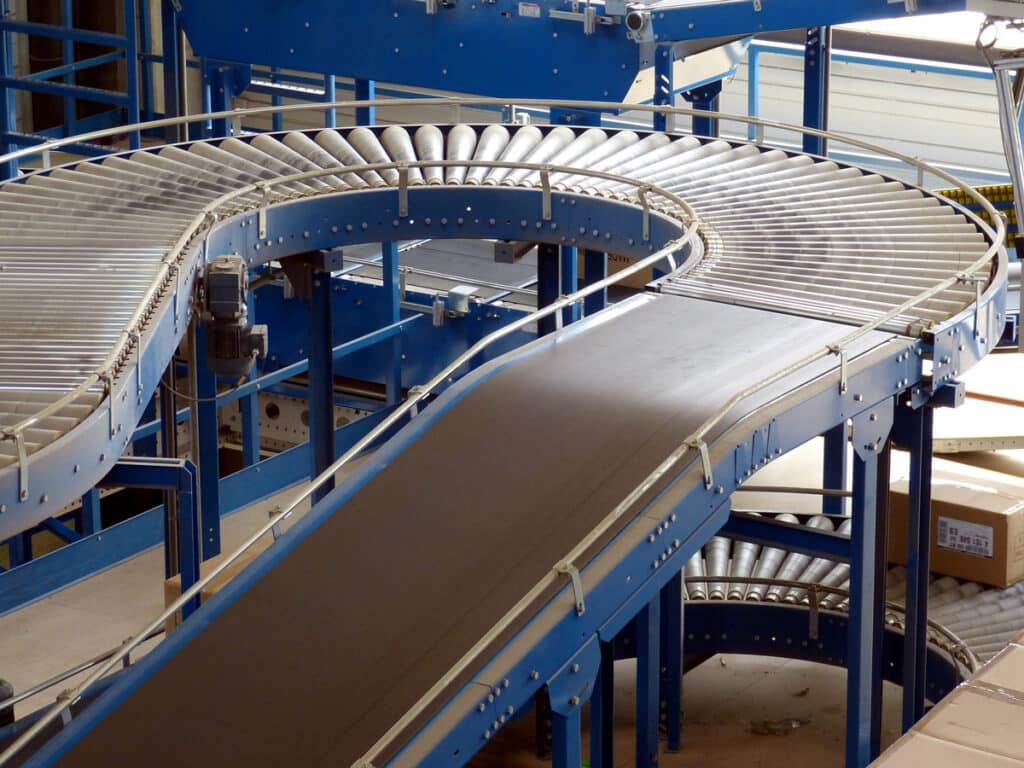
Why is intralogistics so important today?
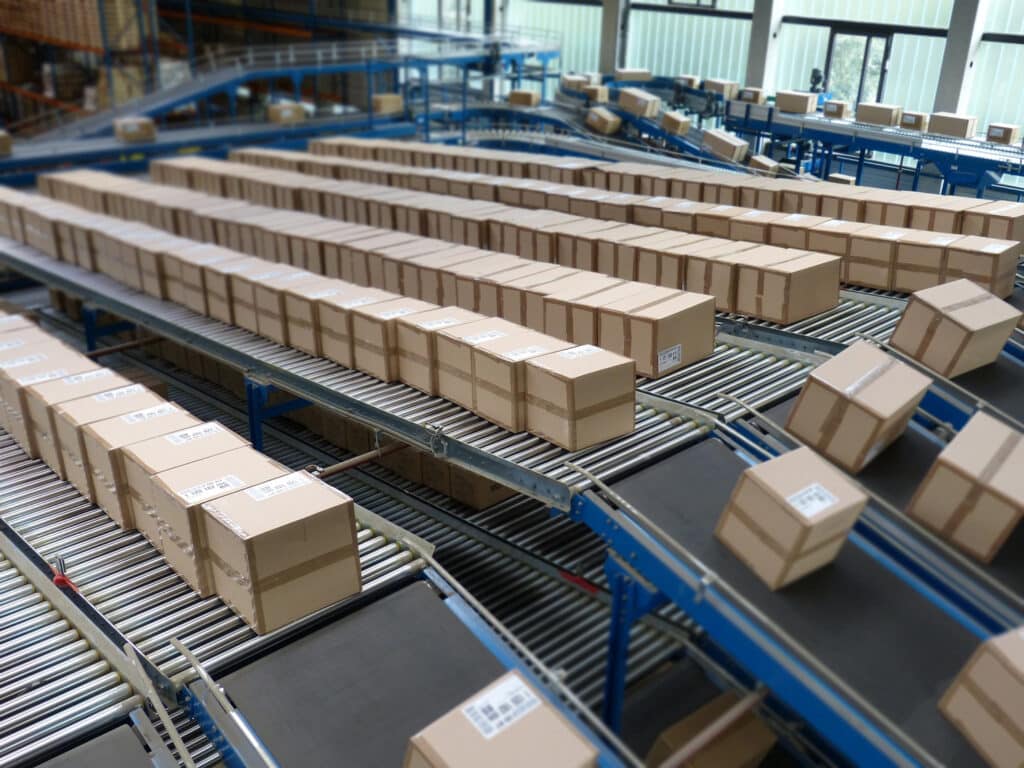
The optimisation of intralogistics through modern conveyor systems has a positive effect on the following operational aspects, among others:
- Better use of available space through the use of modern conveyor systems
- Individualization of orders or production processes without loss of time
- Time savings due to higher throughput, reduction of downtimes and faster processes
- Greater flexibility in logistics for company-specific requirements
- Increased efficiency and cost-effectiveness by increasing the degree of automation of the conveyor systems
» Software for designing modern conveyor systems for optimal intralogistics
Which technologies and machines are used for modern conveyor systems?
It all started with conveyor systems being used on an industrial scale with the famous assembly line. Even today, this still plays a major role in intralogistics in various degrees in many places. However, automation has created many other technological possibilities that are suitable for a wide range of applications. Today, a distinction is made between three variants of conveyor system:
- manual systems
- semi-automatic systems
- fully automatic systems
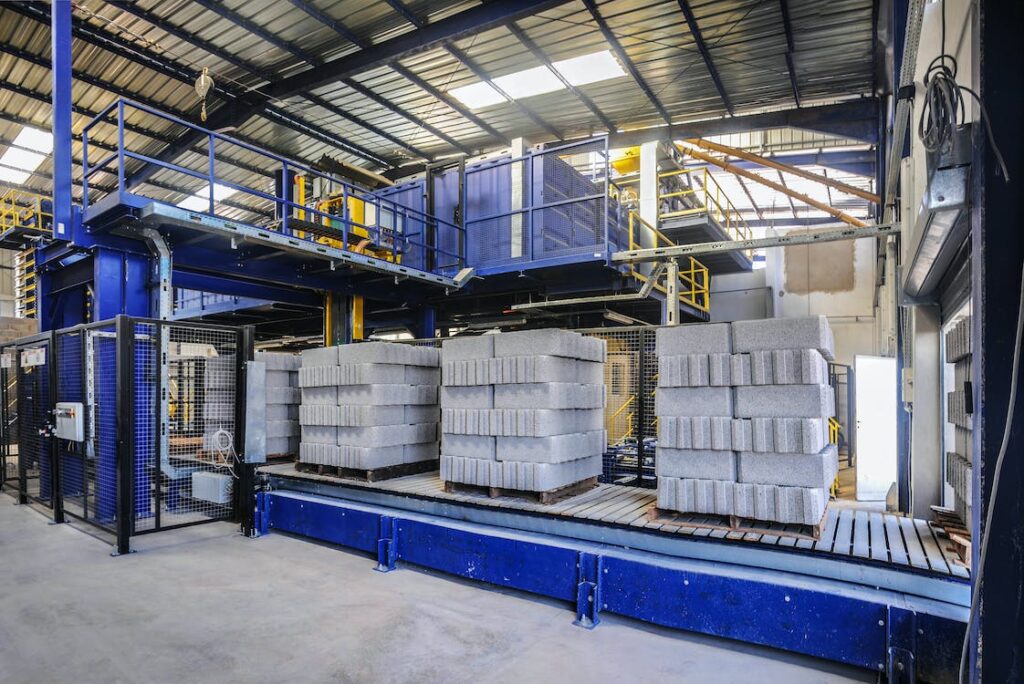
Examples of manual systems:
- Scissor roller conveyor (ideal for mobile applications, e.g. loading into vehicles)
- Small roller conveyors for light and small parts
- Light roller conveyors for transport logistics (e.g. parcel deliveries), for goods weighing up to 50 kg
- Heavy-duty roller conveyors for the transport of heavy goods (e.g. air-cargo containers)
Such manual systems have a long tradition and are still commonplace in many areas due to their cost-effectiveness.
Webinar: Introduction to the 3D design of factories and conveyor systems:

The future belongs to semi and fully automatic conveyor systems
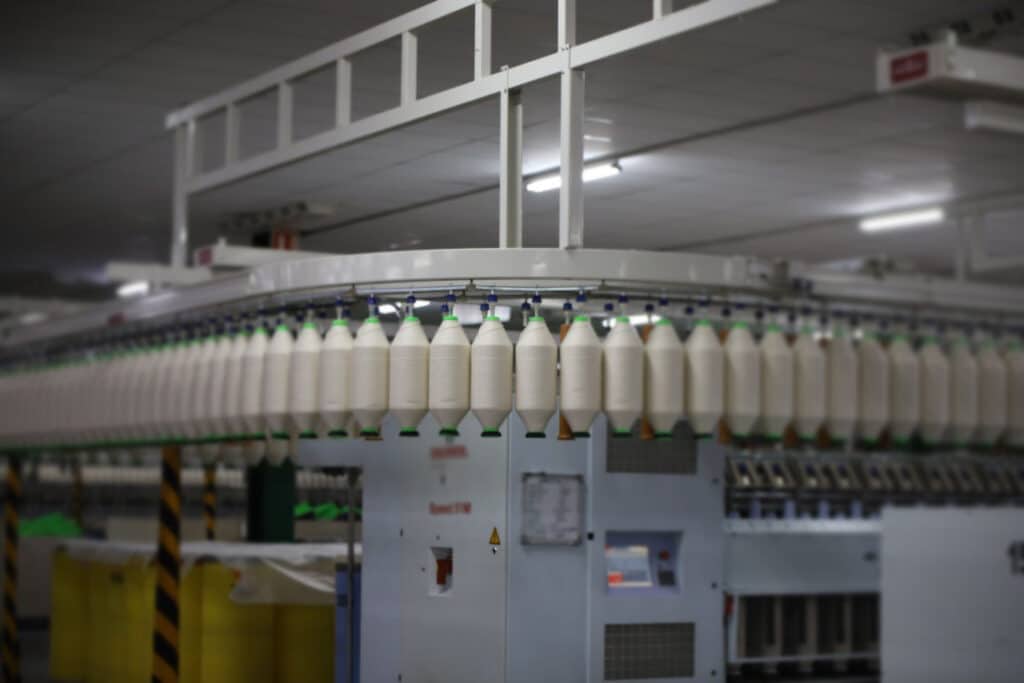
Examples of automated conveyor systems:
- Lifts
- Sorting systems
- Loading systems
- Driverless (autonomous) transport systems
The combination of intralogistics and industrial robots is another favourable area for automation. In the automotive industry, for example, production processes can only be smoothly automated thanks to the precise positioning of car bodies, tools and assembly parts. Employees benefit from significantly higher ergonomics in the workplace, while companies benefit from consistent quality and maximised use of space through efficient transportation and work processes. In the automotive industry , such systems have been used for a long time and have proven themselves time and again. Increasingly, companies are also using driverless transport systems and loading systems that transport various sub-assemblies, such as motors, from the warehouse directly to the installation site in the production line, without the need for forklift trucks.
The physically strenuous lifting of heavy parts is also a thing of the past thanks to semi-automatic assistance systems. Whereas many tasks previously had to be carried out overhead, modern conveyor systems can now lift entire car bodies and turn them into an ergonomically sensible position. There are similar examples in other branches of industry. What is applicable to automobiles can also be used in aviation or heavy industry (e.g. shipbuilding) by adjusting the parameters. The required systems require careful initial planning and often relatively high initial investment, but pay off later through high productivity and significant time savings.
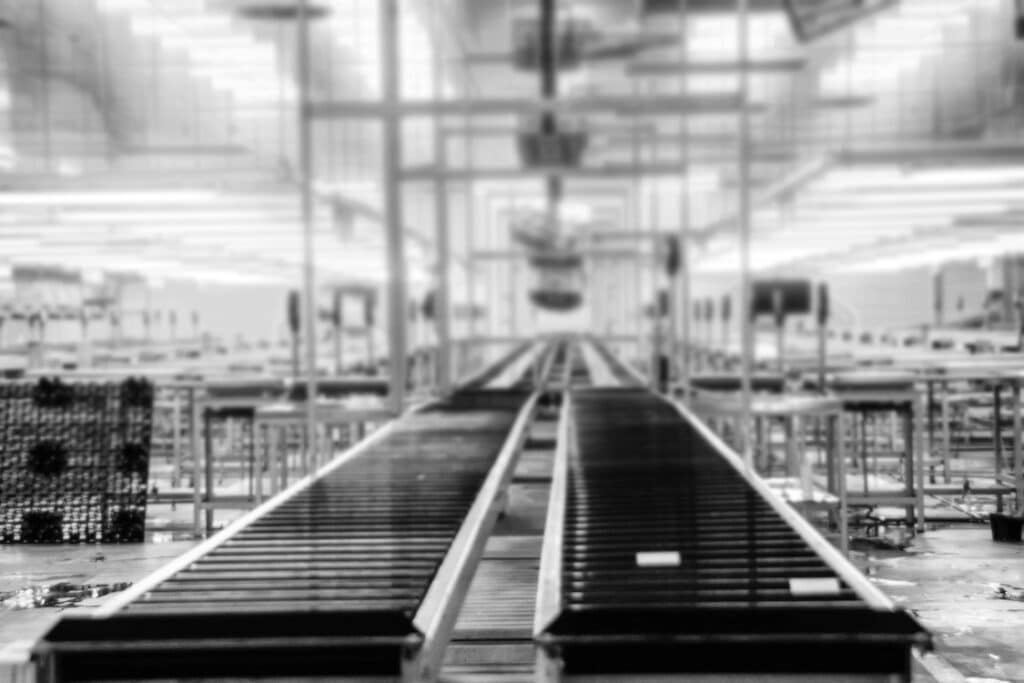
- Toyota: 15.9 Billion US-Dollar
- Kion Group: 7,4 Mrd. US-Dollar
- Jungheinrich: 5.5 billion US dollars
Conveyor systems that work "on demand"
Conveyor systems can be categorised into so-called continuous and discontinuous conveyor systems. In companies where high throughput and an uninterrupted supply of goods are important, continuous conveyors can be found. These include, for example, the classic conveyor belt. Other examples of continuous conveyors are blower conveyor systems, vibrating conveyor systems or screw conveyor systems. In contrast, a discontinuous conveyor delivers the goods irregularly on demand.
In many medium-sized companies, where there are no automated conveyor systems yet, discontinuous conveyors are used in different forms. These include classic logistics aids such as forklifts and pallet trucks, but also cranes and elevator systems. In practice, a combination of manual and automated conveyor systems often proves to be useful. As a result, such companies use semi-automated systems for their intralogistics. The advantage of this approach lies in the high customizability of machines and technologies in order to precisely map the specific requirements for throughput and distribution parameters.
How is the market for conveyor system developing?
What does the future of conveyor systems look like?
The buzzword of Industry 4.0 is on everyone’s lips. The so-called fourth industrial revolution is intended to represent the next logical step towards the intelligent networking of machines in production and logistics, which is implemented with the help of modern IT technology and communication options. The focus is on the direct networking of people, machines and products. It is obvious that this also requires the creation of Intralogistics 4.0 that meets the requirements of companies. The digitalisation and automation of logistics processes is essential for successful implementation. In fact, experts assume that the future of conveyor system can only be thought of together with Industry 4.0.
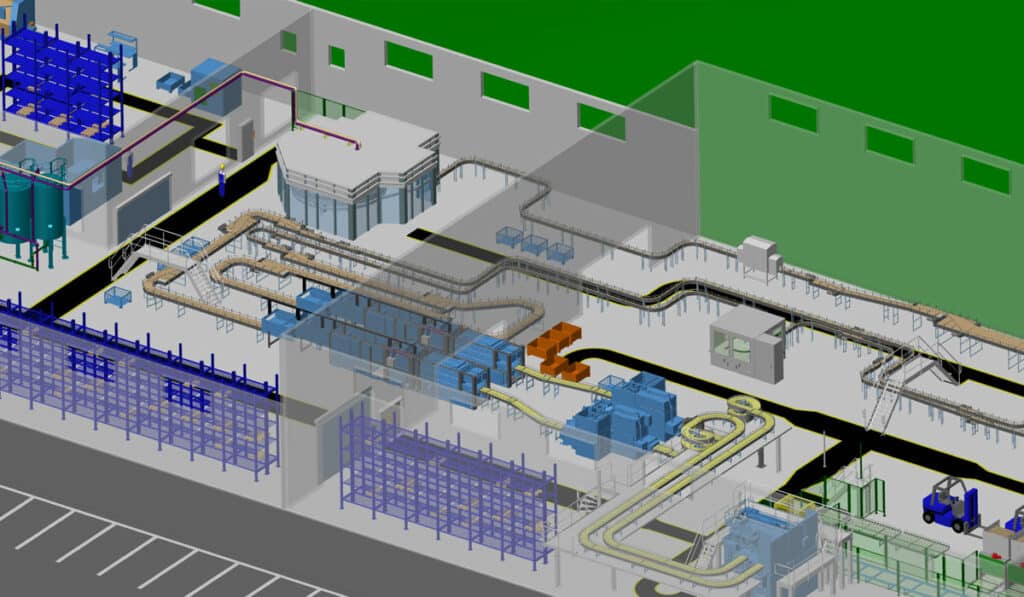
In addition, not only are existing processes and procedures improved, but new opportunities are also opened up to generate innovative business models. Driverless transport systems, automated picking and the complex interaction between man and machine (e.g. through augmented reality) are just some of the things that will affect the design of modern conveyor systems. In this context, the concept of rentable support systems is particularly interesting for smaller companies and start-ups. This allows companies to avoid high initial investments in oversized systems and operate in line with demand. There are currently not many offerings in this area, but that should only be a matter of time.
Virtual and augmented reality (VR and AR) are forward-looking technologies that expand our reality with additional perspectives. CAD Schroer develops industrial-grade VR and AR apps as well as tailored software solutions that can be used productively for the design of modern conveyor systems.
Autonomous systems in logistics and production
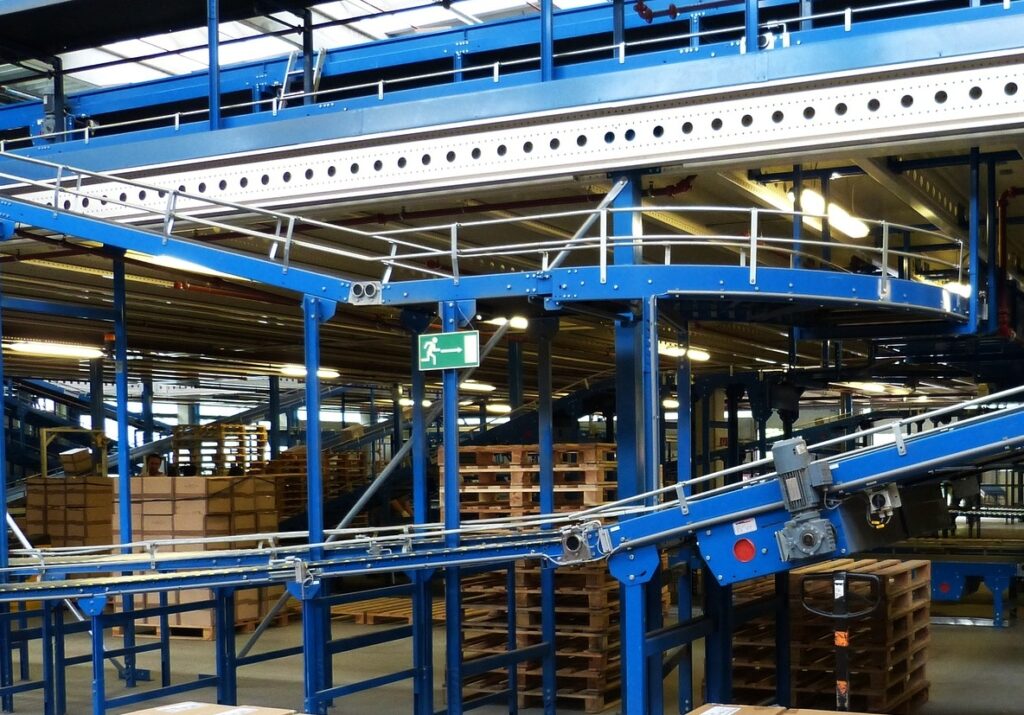
Many systems will be able to operate autonomously in the future. Especially in intralogistics, there are already many approaches that can be realistically implemented. For example, while the use of autonomous vehicles for transporting goods by road is extremely complex, industrial trucks such as forklifts and other vans can already be used internally as part of an autonomous conveyor system. In a controlled environment such as a warehouse, clearly defined routes are easier to implement. In addition, there are no (or at least few) unpredictable environmental influences that make autonomous driving, such as in public road traffic, problematic. The use of sensors on vehicles, shelves, building parts, etc. is key to the successful automation of conveyor systems in order to detect and avoid dangers in good time. Even if complete autonomy of the conveyor system is not achieved, semi-automatic solutions are often a useful contribution to improving operational processes.
High-performance planning for factories of all sizes: The M4 PLANT software offers versatile and customizable catalogs for factory planning. For example, conveyors or shelving systems can be selected and planned very quickly:
Even today, repetitive, simple activities can be carried out by machines without fatigue and with consistent quality, while staff deal with more complex and interesting work. Personnel can thus be deployed much more efficiently. Modular solutions are another approach with which conveyor systems can be adapted to a wide variety of requirements. In the future, conveyor technologies will become even more visible and self-evident in many areas.
Good conveyor systems always require good design
The more complex and specialised a conveyor system becomes, the more carefully it must be designed. Otherwise, either the company’s requirements will not be fully met, or the productivity achieved will fall short of expectations. Lost productivity not only means a loss of time and effectiveness, but above all financial loss. So if you want to set up your intralogistics in a modern way, you should first invest in the professional design of your conveyor systems.
Advantages of good design:
- Exact requirements assessment
- Suitable dimensions (neither too big nor too small)
- Individual adaptability
- Cost-effective operation
- Faster and more efficient construction of the infrastructure
- Targeted use to maximise benefits
How does the design of conveyor systems work optimally?
Companies that invest in conveyor systems want to put the technology into operation as quickly as possible. So there is always a certain time pressure for the designers, who have to fully meet all requirements specifications. Especially for the design stage, the use of 3D computer models is helpful. In this way, complex conveyor systems and even extensive machine installations can be precisely planned.
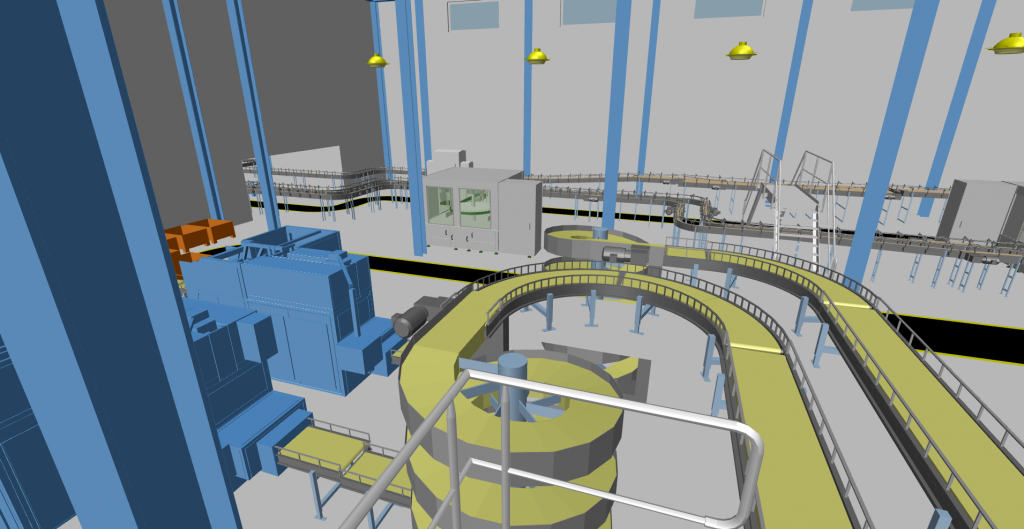
This is commonplace for production with industrial robots and applies to the design of conveyor systems regardless of the degree of automation. It starts, with the optimal use of space, because especially in logistics, every square centimetre counts. The real space requirement is often not correctly determined without a 3D design. This is because in addition to the installation area needed for the machinery, loading and work areas are also required, which can result in design errors and collisions without the aid of a 3D design. Wherever people work together within a plant, occupational safety plays a particularly important role in the design. Design errors can only be corrected retrospectively with considerable effort. Therefore, experts recommend professional specialised design using CAD models.
Speed and quality should determine the design of conveyor systems.
The combination of 2D and 3D design is the ideal way to quickly achieve high-quality results. The design phase begins with the specification of the company’s requirements as well as an in-depth analysis of the advantages and challenges of the possible solutions. Of course, the required budget must also be taken into account, because even the best conveyor system must pay off economically. Combining the feasible with the desired and affordable is another task of professional design, whereby the use of 3D models in particular often allows different options to be presented, and the optimal solution to be selected. Future viability also plays a role here.
If a company wants to change production in the foreseeable future, the conveyor system needs to be able to accommodate such changes. For example, changes to the size and shape of products can have a major impact on the day-to-day operation of a conveyor system. Here too, computer-aided design is helpful to plan for such changes, and test them in advance. A continuously variable scalability of the plant also contributes to future viability, so that an expansion or reduction of capacities is possible should it be required at short notice.
Conclusion: Logistics is only as good as the conveyor system
The performance of modern logistics is directly related to the conveyor system used. Transportation systems play a central role in the distribution of material in a company, whether it is used for production or distribution. Warehousing, production and shipping require specific solutions that can be implemented in the form of tailor-made conveyor systems thanks to modern technologies. The opportunities and challenges of Industry 4.0 will increasingly affect intralogistics with its requirements for automated solutions. Professional design using modern CAD software is also important for the success of a comprehensive logistics solution.
FAQ – Fördertechnik
Conveyor systems are used extensively for materials handling, which is a sub-discipline of mechanical engineering. The basic task of a conveyor system is the mechanical transportation of materials. This includes systems for transporting bulk goods as well as larger items, products, and even people over limited distances. A software for designing modern conveyor systems is M4 PLANT.
The individual types of conveyor system differ according to the area of application and the material. They include conveyor belts, chain conveyors, screw conveyors and conveyor pumps. For example, there are conveyor belts for bulk materials, chain conveyors for heavy loads, screw conveyors for powdered materials and feed pumps for liquids. Extensive catalogues and autorouting facilitate the design of conveyor systems.
Conveyor systems are used in many industries. These include manufacturing, mining, agriculture and logistics. Here, conveyor systems are used to transport materials from one place to another, so as to optimise the production process and increase efficiency.
Conveyor systems enable the fast and efficient transport of materials from one place to another. They help to automate production processes and streamline workflows. In addition, conveyor systems help to improve working conditions by reducing the strain of manual lifting and carrying of materials by personnel.


